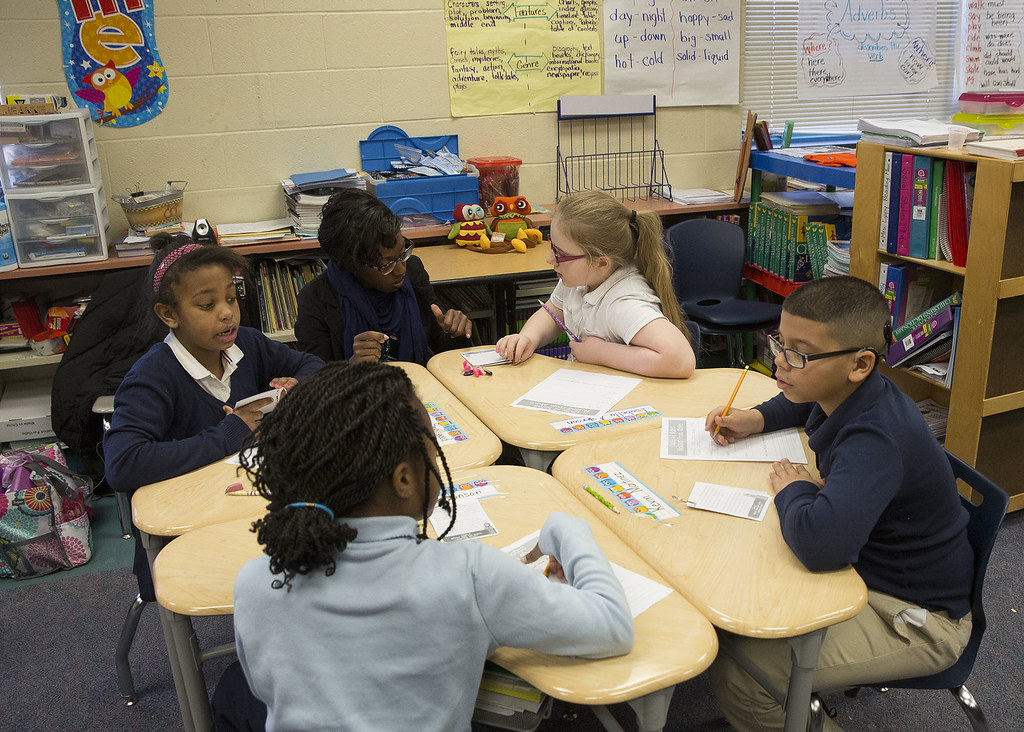SEL Tip: SEL Strategies to Start the School Year

The beginning of the school year holds immense significance as it sets the stage for the educational journey ahead. K-5 educators play a pivotal role in creating a classroom environment that is not only conducive to learning but also nurtures students’ social-emotional growth. Here’s our top suggestions for SEL strategies to start the school year.
Warm Greetings
A genuine and warm greeting is a powerful way to start each day. As students walk through the door, greet them with a smile, a friendly hello, or even a personalized question. These small gestures convey that each student is seen as an individual, fostering a sense of belonging and setting a positive tone for the day.
Inclusive Classroom Setup
The physical environment of your classroom can play a significant role in making students feel included. Decorate the space with diverse and inclusive materials, books, and artwork that represent various cultures, backgrounds, and identities. This not only validates each student’s uniqueness but also creates an atmosphere of acceptance and appreciation for differences.
Clear Expectations
Establishing clear behavioral and academic expectations is essential for a harmonious classroom. Take time to explain these expectations explicitly, discussing with the students why they are important. Clarity about what is expected empowers students to focus on learning and encourages responsible behavior.
Establish Rules and Norms
Involve your students in shaping the classroom rules and norms. Allow them to contribute their thoughts on how they would like the class to run. When students have a say in the rules, they are more likely to take ownership of their behavior and maintain a respectful and cooperative environment.
Ice Breakers
At the start of the school year, use ice-breaker activities to help students get to know one another. Engaging in fun and interactive activities breaks the initial hesitancy and promotes positive interactions. These shared experiences create a foundation for friendships and collaboration.
Classroom Agreements
Go beyond rules by establishing classroom agreements. These are positive statements about how students will treat each other and themselves. By co-creating agreements like “We will listen respectfully,” you encourage empathy, kindness, and a strong sense of community within the class.
Morning Meetings
Initiate each day with a brief morning meeting where students can express their thoughts and feelings. This practice fosters open communication, encourages students to share their experiences, and allows you to address any concerns. Morning meetings also promote a sense of belonging and unity among students.
Behavioral Supports
Implement a system of positive behavioral supports. Acknowledge and celebrate students’ positive behaviors, effort, and contributions. Use a reward system that reinforces desired behavior and highlights students’ achievements. Positive reinforcement creates a supportive classroom atmosphere that nurtures self-esteem and cooperation.
In Conclusion
Creating a welcoming and supportive classroom environment is at the heart of K-5 education. By incorporating strategies such as warm greetings, an inclusive classroom setup, clear expectations, collaborative rule-setting, ice breakers, classroom agreements, morning meetings, and behavioral supports, educators can cultivate an environment where students thrive academically and socially. As teachers, you have the remarkable opportunity to shape not only students’ academic growth but also their character development and overall well-being. Embrace these strategies, and watch your classroom evolve into a space where every student feels valued, respected, and ready to succeed.
If you found this content helpful, you might enjoy this Imagineerz blog post and check out 30+ Social Emotional Learning Activities for Back to School!


